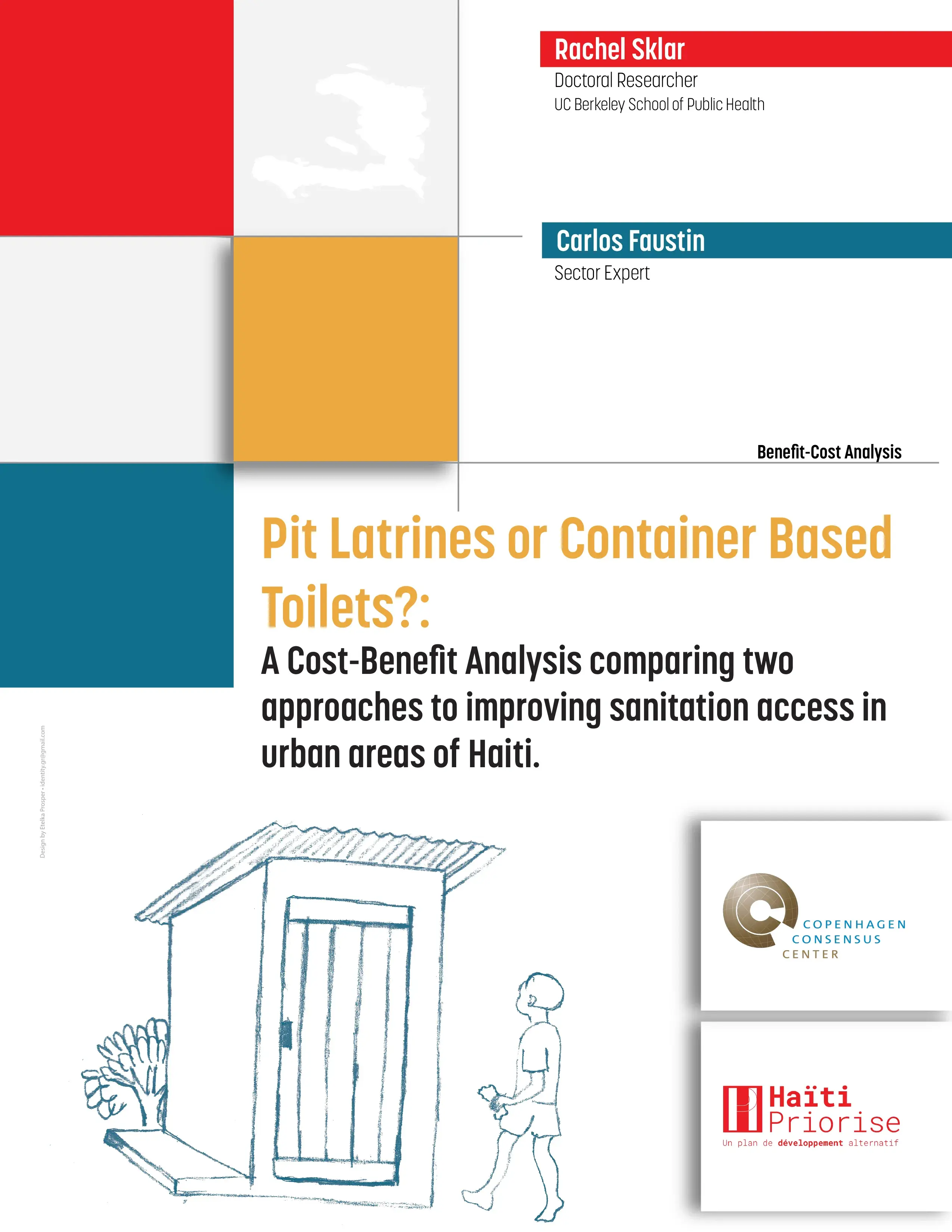Water and Sanitation
A UNICEF report in October 2016 found poor sanitation coverage, which was degraded further by the effects of Hurricane Matthew. There are few household water supply network connections. Cholera entered the country in October 2010 when contaminated sewage from a United Nations peacekeepers’ camp leaked into one of the largest water sources, affecting thousands of people.
There are several possible responses in the areas of urban sanitation and WASH, including providing basic or improved sanitation in urban areas, improving access to water for rural areas, and implementing rural community-led total sanitation projects. The latter is an innovative methodology for mobilising communities to completely eliminate open defecation. Communities are facilitated to conduct their own appraisal and analysis, and take their own action to become open defecation free.
Pit Latrines or Container Based Toilets?: A Cost-Benefit Analysis comparing two approaches to improving sanitation access in urban areas of Haiti.
Written by Rachel Sklar, Doctoral Researcher, UC Berkeley School of Public Health. The research studies the effects of achieving universal urban access to improved water and sanitation.

Economic Costs and Benefits of Three Water and Sanitation Interventions in Rural Haiti
Written by Dale Whittington Professor, Department of Environmental Sciences & Engineering, Department of City & Regional Planning, University of North Carolina at Chapel Hill. The research examines the costs and benefits of reaching rural households with improved water and sanitation access.


